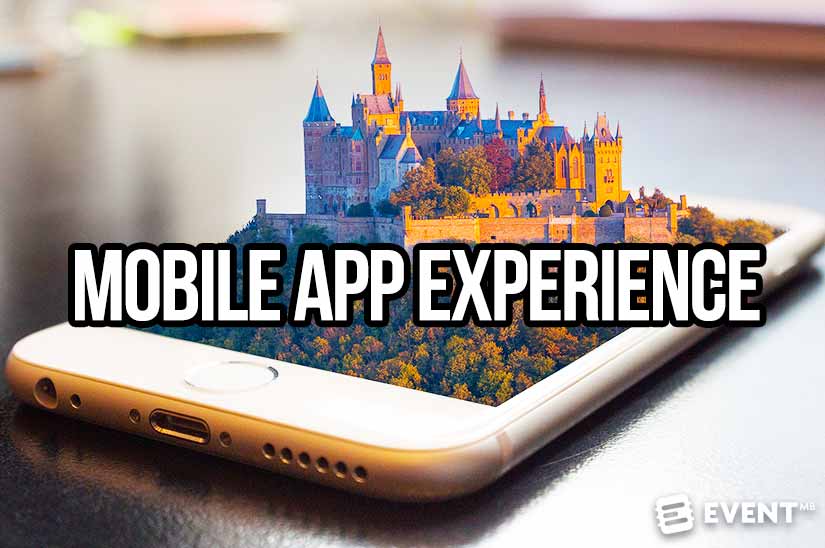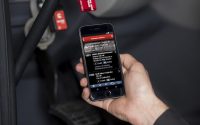Creating an Engaged Mobile App Experience

Finding an App to Fit Your Audience
The main problem with apps is that it’s a crowded market and apps tend to clutter up phones. For mobile phone users with devices with smaller memory, a few big apps can cause it to run slow or impair space to the point that nothing new can be downloaded. The phone may be unable to send emails or take pics. Very few event apps are worth that in the eyes of the users, no matter how handy they are.
We’ll address user need in the following section but it’s important to note that if they don’t try your app, they can’t adopt it. The first step to adoption is always the download and for them to do that, you must give them a reason.
There are a few things you can do to ensure your event app is something your attendees want and that it fills a need. First, it’s important you understand your audience. Here are a few stats that may influence your thinking about mobile apps:
- more than Android users, averaging nine more hours a month spent on them.
- 29% of the time spent using mobile apps is spent on social networking apps (the largest category) –
- 81% of app users use the Facebook app. It still remains the most popular app out there –.
- Amazon is the most popular mobile app for people under 35 (used by 35% of users). –
- The average digital media user spends 5 hours a day (daily) on mobile. –
- U.S. residents age 18-24 spend the most time on smartphone apps at a whopping 26.7 hours per month. –
Realize who your main demographic is and do a little research on their usage and app preferences. If you’re using a company to design the app, let them know the specifics about your ideal attendee so they can incorporate that into the design and user experience.
Critical Components in Creating an Engaging Mobile App Experience
Since you’ve already taken the time to understand who your ideal audience is, you can now plot out their critical needs. Very few people will tie up valuable real estate on their phones for a “better viewing experience.” If that’s all your app has to offer, spend your money creating a better mobile website design instead.
1. User Need
Ideally, your event app will help them do something they want and need, in a way that is much simpler. For instance, the Walmart app will scan your receipt and compare the price you paid for specific items versus other stores in the area. If it finds something that’s a better deal than what you received, it will match it. People who want to save money (one of the main characteristics of Walmart shoppers) will find value in the app.
You’re looking to fill a need for your attendees, speakers, exhibitors, vendors, etc. Maybe that’s in networking, room selection, sponsorships or some other area. But your app must do something for them that simplifies their life or they won’t see much reason to download it or use it on a regular basis.
2. Communicating Value
If you’ve spent time figuring out what your attendees need in an app, you must ensure that they know you’ve listened. You don’t want to simply tell them about the app. Instead, show them how it will make their lives easier or what is so appealing about it from their point of view.
After you start getting some app adoptions, continue to look at how people use the app. How much time do they spend on it and where? What you initially thought was the most valuable feature may not turn out to be the most valuable to your audience. By monitoring these things, you’ll also know the areas you may want to explore further or features you want to grow.
3. Size
Again, most people are frugal with their app downloads because of space. If you must choose between a monstrous app that does everything or a smaller one that does the one thing they need, go with the latter. Bells and whistles are cool but only if you have the space. If you want them to keep your event app year-round you need to ensure it’s something they find value in and it’s not so large that they get rid of it for size alone.
4. Data Targeting
With a mobile event app, you now have access to a lot more data and you should be using it. Marriott, for instance, used its customer data over the years to create new enhancements that appealed to its target traveler such as mobile check-in.
You can also use data to tailor and personalize offers to a segment of your event audience. This gives people exactly what they want to see and what they find value in based on the data and historical activity you have access to.
5. Fitting in with Other Digital Messaging
Digital marketing is about transcending the “one-size-fits-all” messaging of the past. While people may love your new event app, you never want it to be a full replacement of all of their other digital activity. For instance, no matter how amazing your social networking feature is on your app, your attendees will still view Facebook on occasion. Why? Even if you have an extraordinarily high adoption rate on your app, people have acquaintances, family, and friends who are not on your app.
Instead of viewing Facebook, Instagram, or text messaging as rivals to your app, find ways to incorporate them into a seamless experience. If attendees can go back and forth between the apps with easy actions and connections, they’ll likely use your app more. For instance, instead of competing in social media, incorporate the option of allowing personal feeds to come through into your event app. Allow texting through it. Plus, the more options you offer, and the more different ways you use the app, the more likely people will see value in it and not grow bored.
6. Creating a Habit
As mentioned earlier, 20% of downloaded apps are used only once. In order to keep this from happening to your event app, you have to meet the qualifications above as well as work to become part of their daily digital habit. How many of us find a break in our schedule and we open an email app or a social media one? Most of us, I’d assume. You’re midway through your stream before you’re even cognizant of the fact that you opened it. It becomes automatic when we have time to kill. Ideally, you want attendees to feel the same about your app. If they have a moment, you want them to open it. In order for them to do this, they need to remember the app and login. This means one of your main marketing jobs around your app is increasing the number of logins.
In order for your app to become a habit, you must incentivize initial use with something outside of value. There are two options:
An offer is a direct promise, download this app and receive X. While an offer usually works to increase downloads and use the first time, these things often fall away when the offer is no longer available. Just like Groupon, it conditions users to wait for something (like a discount). No discount, no action.
(a term borrowed from coding) is something people don’t expect. They download the app and receive a prize message that they knew nothing about. The reason an Easter egg is so popular is that a pleasant surprise often gets people talking. “Did you download the app? There’s a free drink coupon if you do!” This generates its own buzz and discussion about the app. There’s an illicit thrill behind discovering this type of “secret” incentive.
But it also does something else that’s notable. It conditions people to watch for these sorts of actions. If you periodically reward usage (without warning) people will often stay involved and open the app just to see what’s going on in the community and what they’re eligible for, just like in gaming and , Easter eggs get people clicking.
Adding an element of fun goes a long way to helping create an Internet habit of logging into your app on a consistent basis.
Make New Friends and Keep the Old
The first-time user’s experience is one of the most critical. Most attendees will not log in, look around, become bored, and come back tomorrow to see if anything has been added. They’ll try it once (hopefully) and make a decision about it from that minute-long experience. It’s critical to your success that you provide the first-timer with something to do and something they will find valuable.
Next, you’ll want to create a login habit as mentioned above. Finally, it’s important to continue to reach out to those who have been longstanding users. Every day, your app is fighting to retain space on your attendee’s phone. Give them reason to keep you with continued value throughout the year.
It’s much less expensive to keep existing users than to acquire new ones. When it comes to events, you’ll want both. But it’s important that you continue to message users in-between events using in-app features. This will remind people to log in and show them that this is not just a one-off app that they can delete without notice. Create value and deliver it year-round for best retention rates.
Why Quality Assurance (QA) Is Important to the App Design Process
All of the things covered in this article can be trumped by one simple problem – bad performance. An app that takes too long to load, has glitches and doesn’t do what it says it will, doesn’t add up to a good mobile experience. A long load time (longer than two seconds) will also affect your rankings in the Google Play store.
Make sure you spend the time in QA developing a quality product. Test it out with people who don’t fully understand what it’s supposed to do. Give it to your tween or teenager. Try to break it. Do all of these things before trying to convince your audience that they need it more than air.
If you’re not creating your own app, these points are still valid. Use them as conversation starters with the app vendor. You want to ensure they’re using the same considerations you are for your audience. While you’ll never have the same flexibility with a pre-made app that you would through creating your own, it may contain enough of what you need and be a more attractive price to make it worth it for you.
In Conclusion
App adoption and creating a beneficial mobile app experience for your event audience occurs more than just at the time of roll-out. You want it to become an ongoing push that helps keep you connected to your community. In order to do that, you must provide them with value that they can’t get elsewhere. One of the ways to provide value is to know your audience and continue to develop your app based on their needs. Whether you design your own or select a company with a premade app, audience knowledge is crucial to your success and will make for a much more enjoyable experience.


